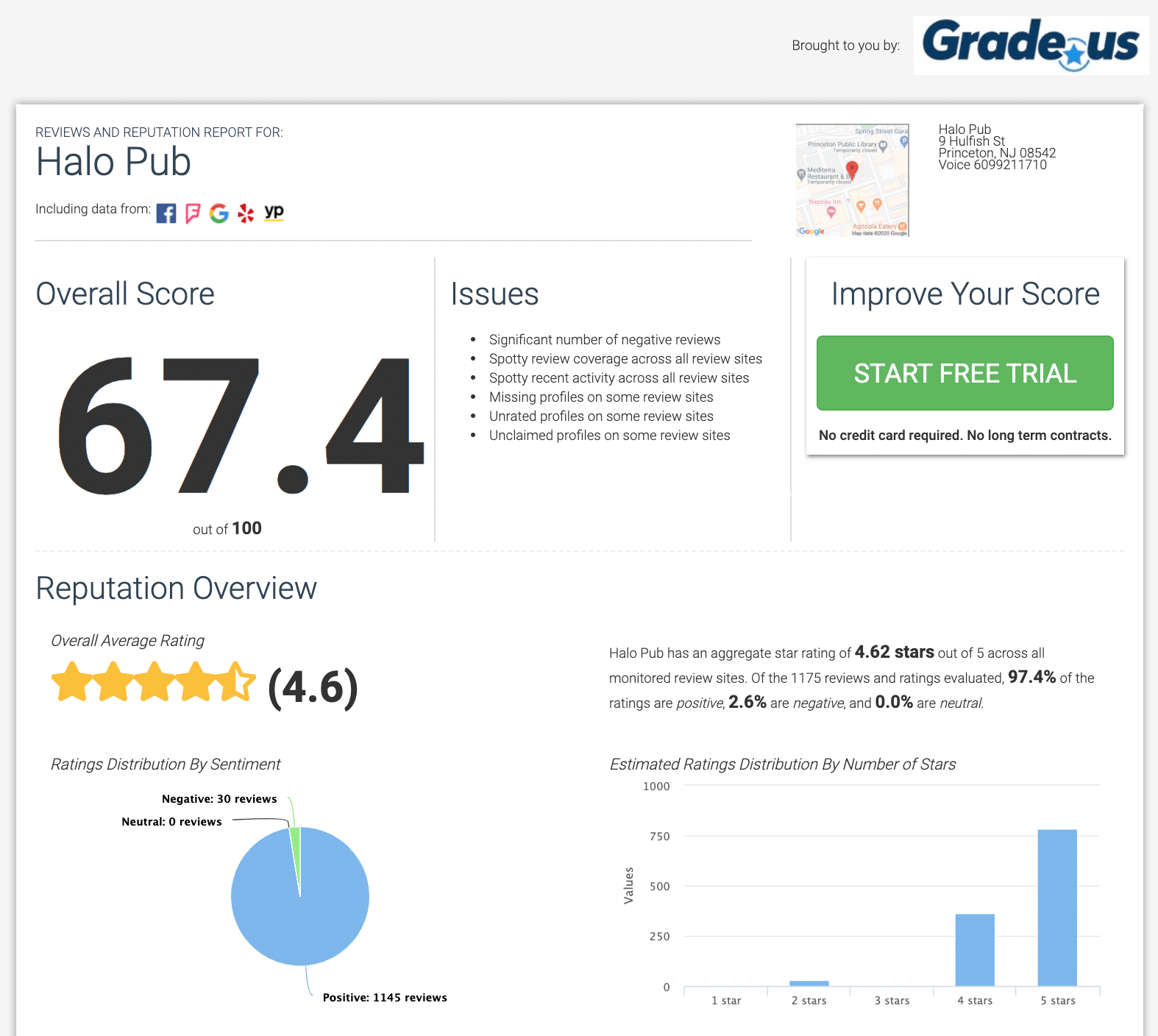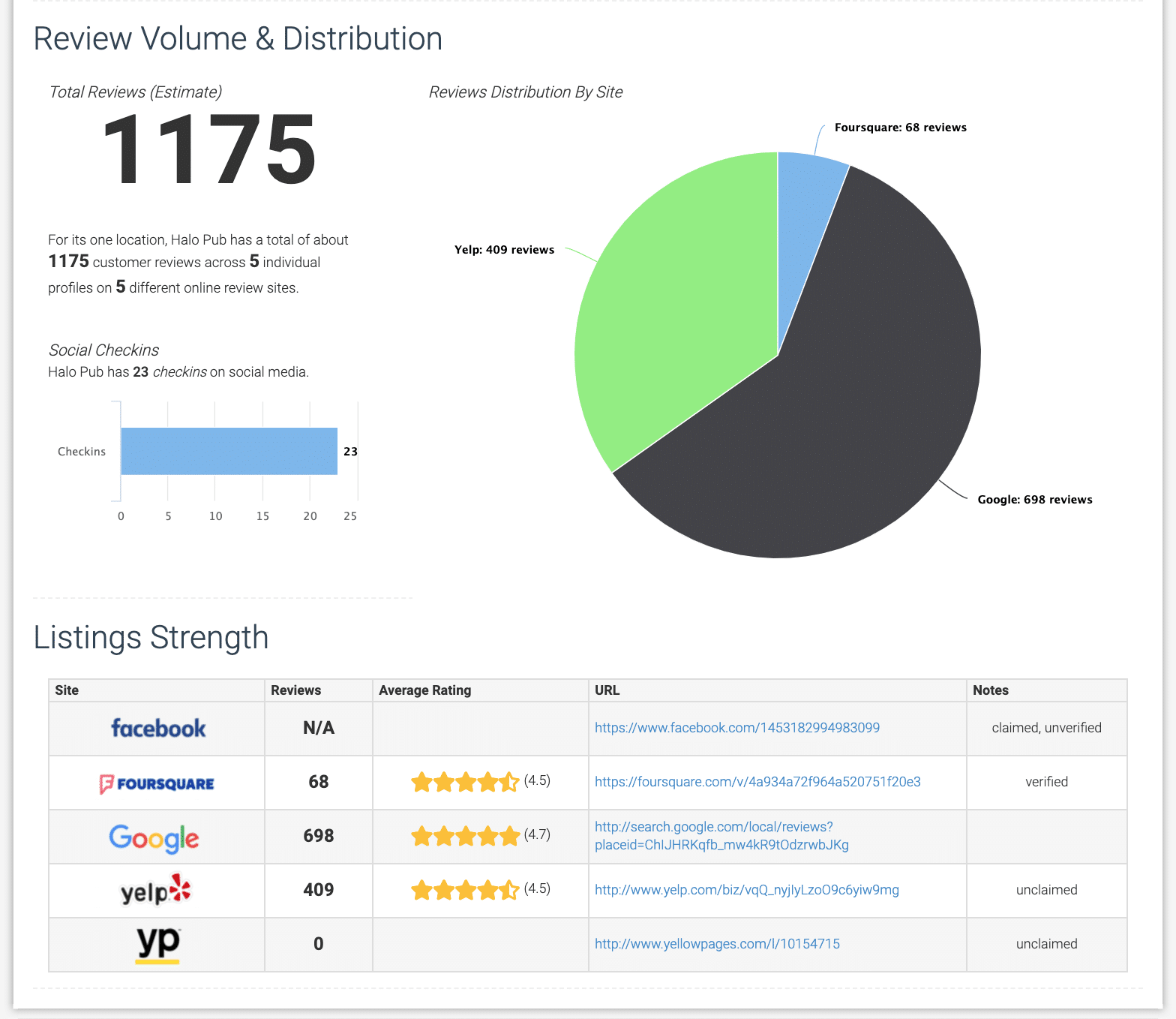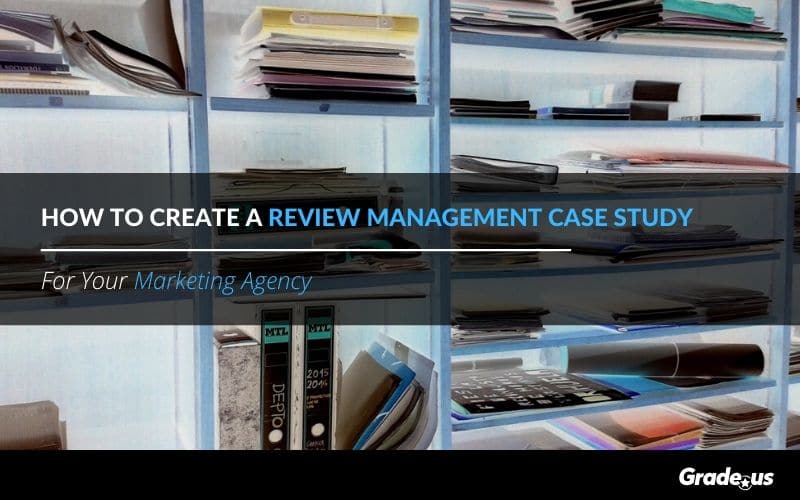“How do I know you can do what you say?”
Your prospective clients have questions about your review management services. They’re looking for an answer to the question lurking in the back of their minds. Most competitors believe they’re looking for proof. So, they create a review management case study to showcase the results they’ve achieved for other clients.
“See? That’s what we can do for you.”
Clients glaze over and tune out. As far as they’re concerned, any claim that a vendor or consultant makes goes in one ear and out the other.
But why?
What’s wrong with telling clients about your accomplishments? The thing is that clients don’t want you to tell them about the results.
Table of Contents
A successful review management case study shows results
This is what your clients want.
They’re looking for a risk reversal. It’s the subtle part of client acquisition, which most of your competitors get wrong. They do their best to tell clients about the results they’ve been able to achieve. They tell them about how happy other clients are.
But clients want you to show it.
Case studies are ideal if you have the right ingredients. When they’re used well, you’re able to move clients from spectator to subscriber, naturally. But only if we have the right parts.
A great case study starts with the right ingredients.
When most agencies think of a great case study, they think about something generic – content that’s focused on results, statistically valid, etc. A document with an overview, problem, solution and conclusion. That’s where the problem starts; an excellent case study is consistent with itself.
You need that stuff, but it doesn’t create a great case study.
A great review management case study does three things well:
1. Relieves your prospective client’s fear, stress and anxiety
2. Convert your prospective client’s attention to desire
3. Convert a prospective client’s desire to revenue
That’s it.
We’re showing clients the results that we are able to achieve. We’re presenting the problem and the solution. Still pretty standard so far, right? Here’s where we move beyond the traditional case study.
1. Relieve your prospective client's fear, stress, and anxiety
When it comes to hiring your agency, prospective clients have specific concerns. They’re looking for detailed information that addresses the following issues.
These fears are ever-present in your client’s mind.
How do you relive your client’s fear, stress and anxiety in your ORM case study? You mirror the items above.
- Create risk reversals. There are lots of ways to do this for your clients. If your systems and procedures are strong enough, you can guarantee a specific result or outcome. If that makes you uncomfortable, you can also reduce the risk to your clients, i.e., instead of retainer agreements, you allow your clients to pay per lead
- Answer objections. Prospective clients will view your ORM case study with skepticism. There's an easy way to overcome this skepticism of your ORM case study. Have your clients defuse the objections! Clients in the same industries as your prospects are perfect. Reach out to your existing clients and ask them about their objections before getting started, then what happened once they worked with your agency.
- Borrow trust. The fastest way to build trust is to borrow it. Show clients a list of high profile brands your agency has served. Create content for high profile sites; show them you're connected with trustworthy, high profile influencers. Better yet, use an employee from a high profile client to boost the effectiveness of your case study.
It’s a straightforward way to relieve your client’s fear, stress, and anxiety.
2. Convert your prospective client's attention to desire
How do you do it?
How do you convert your client’s attention to desire? You allow them to sell themselves on the benefits of your services and the value you provide.
Here’s how you do it.
Show clients how to assess the status of their review portfolio themselves, in the privacy of their own home or office. If you’re using our agency plan, you can provide clients with a white-labeled version of our review assessment tool.
It gives clients the tools they need to assess their online review scores.
Then, take it further.


Show your clients how to go about calculating the ROI of review management ahead of time before they’ve made a decision. They’ll get a clear look at the number of customers they’re losing and the cost to their business. It’s a sobering assessment, but it’s also objective.
The numbers won’t lie.
It’s especially convincing if they make these calculations themselves. Oddly enough, you’ll relieve their fear, stress and anxiety about working with you by reframing their problems and shifting the focus back where it belongs. Showing them what’s at stake with their review portfolio.
- Being overtaken by competitors
- Losing traffic, leads, customers, and sales
- Declining conversion rates
- Growing ad and marketing costs
- Lost market share
Give your prospective clients the sufficient tools and resources they need to place their trust in you, then shift the focus back to where it belongs — their problems (more on this later).
How do you do this in a case study?
You share the details, outlining high-level information on the calculation or formula you used, the nature of the loss and what it cost the client featured in your case study. You’ll want to protect your clients’ privacy and honor their dignity here.
Don’t embarrass your clients.
Do mention essential details about their circumstances showing how online review management changed things for the better.
3. Convert a prospective client's desire to revenue
The next step is helping your clients convert their calculations to money.
This is a simple step, but it’s the most important. Doing this makes it real in your client’s head. It tells them that the loss was real, that you were able to get that money back and finally, that you made them more money.
These case studies take work.
It’s a considerable amount of effort to make this work, but a case study like this will generate a steady flow of leads for years. If you’d like your case study to be effective, be sure to include specifics on:
- Your client
- The name of the business
- The amount (or potential) loss per month
- Problems encountered
- Impact on their reputation in the marketplace
Don’t misunderstand. I’m not at all suggesting that a case study alone is the only tactic you need to make your marketing plan successful. That said, it’s a highly persuasive conversion tool that can help you close prospective clients successfully.
It just needs to solve the right problems
A great review management case study creates more problems
Every solution, whether it’s a product or service, creates new additional problems. Buy a new car, and you now have to deal with tune-ups, oil changes and routine maintenance. You create a review management case study and long story short–clients want to hire you.
Your clients now need guidance on how to improve customer sentiment.
Responding to one-off reviews is one thing, changing the collective perception of your business in your industry is another. Dr. Gottman’s balance theory of relationships suggests a 5:1 ratio. Five times as many positive interactions as there are negative.
To focus on the metrics that matter most.
If overall sentiment for your client’s product is poor, but their ratings average 4 stars or higher, which matters more? Metrics aren’t created equal. They’re goal dependent. The distribution and frequency of new reviews as a metric may be more important than sentiment if you’re simply looking to minimize damage and vice versa.
We are prioritizing action steps.
Which steps should your client take first? When should they take those steps? Will these steps require any policy or procedure changes?
A great case study serves you and your clients. It ends by introducing and agitating the fundamental problems your clients need to be solved. These are problems that keep them up at night.
What about the other ingredients?
A mesmerizing case study uses a variety of subtle details to attract and keep client attention. These details keep our case study on the right track, without jargon, lectures or condescension. Let’s look at the first key ingredient to creating an informative and useful case study.
1. Ask the right questions
When they’re handled poorly, creating a case study is a lot like asking for a testimonial. It feels sleazy, awkward and uncomfortable. Your star client isn’t really sure about what to say, doesn’t know how to say it and isn’t really comfortable saying it.
Most of the time it’s because we’ve asked the wrong questions.
Best case scenario, the wrong questions create short yes or no responses, which as we know, aren’t really that helpful. Worst case scenario we get a case study that’s filled with nothing but wonderful, sticky-sweet compliments, the sort of thing clients distrust.
Okay, what kind of questions should we ask, specifically?
1. What problems motivated you to buy [our service]?
2. What did you expect as a client coming in?
3. What were the results of using [our service]?
4. What would be two to three benefits to using [our service]?
5. Would you recommend [our service] to anyone else? Why?
These questions are incredibly effective because they’re…
- Open ended. Clients, especially when they're happy, are eager to please. These questions make it difficult for them to give us the answers they think we want. We avoid the dreaded yes or no answer and pretentious fluff.
- Problematic. Research shows we're drawn to problems. Fear, problems, disasters – these things grab and hold our attention more easily than neutral or positive information.
- Solution focused. Solutions presented without a problem lose context but they're also proven to be less effective. We're more likely to choose a solution when it's presented after the problem.
- Precise. These questions draw out details. When it comes to numbers, case studies are usually pretty specific. Emotional, psychological and situational details? Not so much. These questions are open ended but they bring out the specific details that make your case study believable.
- Low barrier to entry. Tell clients we only have five questions and they're more likely to give us the case study we need. Get them to elaborate, and they tend to go into detail on their own. People love talking about themselves. Ask permission to continue and most of the time they're willing. When it's handled well, a 5 to 10 minute conversation is all we need.
Here’s why these questions are so important. They show you what you’ll need to include and how to create a fascinating case study.
- Asking what problems motivated them to buy our product or service gives you the juicy details you need to create your overview and introduce the problem.
- Asking "what did you expect" gives you specific details on their goals and objectives. If the majority of negative reviews are on Yelp the campaign goal might be to focus on getting positive Yelp reviews.
- Sharing the results of your program creates a nice opening for you to talk more about the steps you took to remedy the problem, allowing you to discuss the strategy and tactics involved. This is key as it's a subtle way to show your depth of knowledge without being self absorbed.
- Asking clients about the benefits of our service gets clients to sell our product or service to others, increasing their psychological commitment to us.
- The last question establishes trust and defuses objection in a prospective customer's mind.
2. Tell a story
Review management case studies, when they’re fascinating, tell a story. Was our client the victim of social justice warriors run amok? Did an ex employee create a PR nightmare that lead to a wave of nasty reviews?
If there’s a compelling story to tell, share it. Stories are filled with personal details that clients remember. The more compelling the story, the more likely it is to be shared.
Does our client have a story to tell? Stay safe with these guidelines.
Don’t humiliate anyone. The client should be the hero or beneficiary of the story (We benefit by sharing their story).
Avoid asserting power over others. If the client just laid off 1/3 of their workforce, bragging about their new hires is probably a bad idea. Keep the story focused on the client, maintaining a servant perspective.
Show gratitude. Create a great review management case study and our client will probably feel like we owe them one. What’s worse, their contribution will increase in value over time (in their mind), while decreasing in ours. So we have to do what we can to continually show clients our appreciation.
3. Introduce the next problem
Problems create stress and anxiety. Solutions relieve stress and anxiety. A great case study introduces a new, but very relevant, problem.
This problem spurs clients to take action – whether that is subscribing to our email list, using our tools or resources or requesting a quote. It motivates clients to take the very next step. Add a call-to-action introducing the next problem at the end of your case study.
If our review management case study features a restaurant, for instance, our next step could be…
- Dealing with legitimate negative reviews.
- Getting rave reviews from angry customers.
- Changing customer sentiment when clients have lots of bad reviews.
Pitch the offer to relevant partners, restaurants, suppliers, etc. Lead with the problem and present our lead magnet, our offer as the solution. Track the results via analytics then, rinse and repeat.
We just need to make sure our solution comes after the problem.
A review management case study can be highly persuasive
The review management case study alone won’t convince a prospective client to buy. You still need to make the pitch for review management services. If you’re an experienced agency, you know that’s unrealistic. Marketing is a multifaceted process.
That shouldn’t be our goal if clients aren’t ready for that.
That’s why it’s so important to identify your client’s location in their buyer’s journey. Entice them instead to take the very next step. Agitate their problem, give them a compelling reason to subscribe. Create a trail of breadcrumbs, leading them slowly but surely from prospect to subscriber to client.
Prospective clients have a question
They’re looking for an answer to the questions lurking in the back of their minds. Your competitors believe they have the answer, the proof your client is looking for. But you know the truth; clients want you to show not tell.
Use the secret ingredients I’ve shared to create a compelling review management case study, the kind that attracts immediate and consistent attention. With consistent effort, your case studies will attract the reputation and results you’re looking for.









